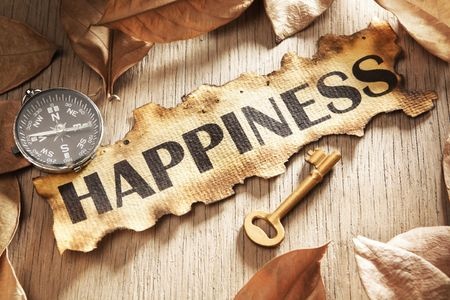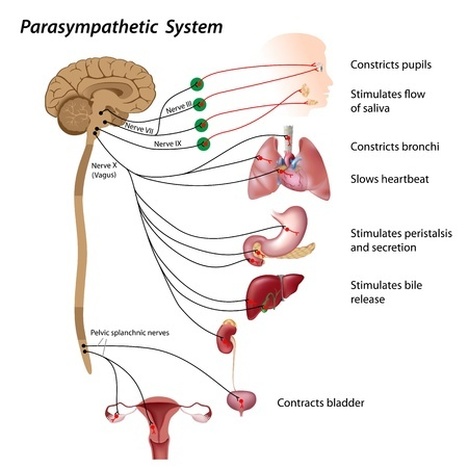|
Sleep is One of the Five Pillars of Neuroplasticity
Sleep may be just one of the most underrated things in leadership. Last fall, I began an experimental neuroscience intensive, with 8 other coaches around the country led by Ann Betz, the Research Director of BeAbove Leadership, an organization that has spent the past 15 years researching and teaching the intersectionality of neuroscience, consciousness and coaching. We come together a few times a month to discuss scientific research, popular articles, scientific lectures and talks on neuroscience to better understand and enhance our work as coaches. We spent a month on the topic of neuroplasticity, which, simply put, is the ability of the brain to rewire itself. Sleep is one of the pillars of neuroplasticity, without which it is very difficult to make and maintain neuroplastic changes in the brain. Just think about trying to exercise and build new muscles without eating any protein—it would be very difficult to do. As protein is essential for building and maintaining muscle, sleep is essential for building neuroplasticity. Here are some interesting things that fascinated me about sleep that I’d like to share with you! Sleep Flushes out Brain Toxins Between the 7th and 9th hour of sleep, our brain releases cerebrospinal fluid, a clear liquid surrounding the brain and spinal cord that cleans out toxins from the brain, and sorts through memories that are deemed important.[1] This is one of the reasons I recommend my clients get at least 7 hours of sleep every night, to get the cleaning in to create an optimal environment for brain rewiring via neuroplasticity. Think about it—what happens when you withhold yourself from going to the bathroom? Not great for your intestines at all. When you are not sleeping well, you may be doing that same thing to your brain. Sleep Helps the Brain Replenish Neurotransmitters According to James B. Maas, PhD, and author of “Power Sleep,” the brain replenishes neurotransmitters during REM sleep.[2] Neurotransmitters are simply chemical messengers that enable neuron-to-neuron communication. He says these neurotransmitters are essential for remembering, learning, performance and problem solving. Remember, REM sleep happens in the 6th–8th hour of sleep, so yet another case for getting 7 hours of sleep a night. Think about it: do you want a filthy brain with rusty neurotransmitters that aren’t able to communicate well? Likely NOT going to help you in your leadership very much. Sleep Helps Store Memories When we sleep, the brain stores information in long-term memory through sleep spindles. These are short bursts of brain waves of strong frequencies that occur during REM sleep. REM takes place toward the end of the night, between the 6th–8th hour of sleep, when people are more likely to dream. During REM sleep, Maas says “the brain transfers short-term memories in the motor cortex to the temporal lobe to become long-term memories”.2 He goes on to say that this process can be particularly helpful for storing information related to motor tasks so that these tasks become automatic. So if you are keen on improving your gold swing, get a good night’s sleep. Sleep Deprivation Exacerbates our Fight-or-Flight “Animal” Brain[3] When we don’t get enough sleep, the body interprets this as stress. As a result, our sympathetic nervous system gets activated and induces a metabolic reaction of the body to stress.[4] When this system is activated, norepinephrine and cortisol are released in the body and there is increased amygdala activity. This contributes to sleep disruption, which leads to more sympathetic nervous system activation and more sleep loss. Sleep Deprivation Contributes to Negative Moods Published studies on sleep deprivation date back to 1896. Since then, there have been numerous studies on the effects of sleep deprivation on human performance, feelings and cognition. What the science has found is that all kinds of sleep deprivation—whether long-term or partial—result in negative moods. The most common feelings are of fatigue, loss of vigor, sleepiness and confusion.[5] So, What are My Recommended Best Practices for Sleep? When we sleep, the brain solves problems. So, an effective strategy for sleeping better at night may be to prime yourself for relaxation. Don’t focus on thinking about a problem or something to solve before you go to sleep, as your brain will try to work on that during the night. Instead, try reading poetry, getting lost in a romance novel, listening to soothing music or even doing art. Do something where you are not trying to problem- solve. Focus on getting at least 7 hours of sleep each night. Given that cerebrospinal fluid is released in the brain during REM sleep, it is important to get enough sleep to activate your brain’s natural cleansing system. If you are one of those people who can function on very limited sleep, it may be possible that you enter into REM sleep sooner, and thus feel more rested. I remember after surfing one of the most powerful (and scariest) waves I had ever been on in Indonesia. It was difficult for me to sleep for that night, likely due to the chemicals coursing through my body and my sympathetic nervous system being turned on. My dopamine levels I’m sure were off the charts. If you are a thrill seeker by day, try listening to soothing music or an audio meditation to calm your system. A Yin, or slow-moving yoga practice at night can also calm your nervous system making it more ready for calm and rest. Meditation and focused breathing also help reduce amygdala activity. In short, making sure you get a healthy amount of sleep each night should help with negative moods, reduce amygdala activation (less fight-or-flight), help you store long-term memories and organize networks in your brain that are essential for problem-solving, learning and performance. Where have you struggled with sleep? What strategies have you used to improve your quality of sleep? Note: Thank you to my Neuroscience Intensive coaching colleagues for their time and work compiling and sharing research on neuroplasticity, and in particular to Ursula Pottinga of BeAbove Leadership for her compilation of research on neuroscience and sleep used to help write this post. [1] NIH Research Matters, How Sleep Clears the Brain. October 28, 2013. https://www.nih.gov/news-events/nih-research-matters/how-sleep-clears-brain [2] “Strengthen Your Brain by Resting It.” American Psychological Association, Mark Greer, July/August 2004, Vol 35, No. 7. [3] “Can a Lack of Sleep Cause Psychiatric Disorders?” Scientific American, Nikhil Swaminathan, October 23, 2007. https://www.scientificamerican.com/article/can-a-lack-of-sleep-cause/ [4] “Sleep Deprivation: Impact on Cognitive Performance.” Paula Alhola, and Päivi Polo-Kantola. https://www.ncbi.nlm.nih.gov/pmc/articles/PMC2656292/ [5] Neurocognitive Consequences of Sleep Deprivation, Jeffrey S. Durmer, M.D., Ph.D., and David F. Dinges, Ph.D. Like What You Read? Sign Up for my Monthly E-news!
0 Comments
Let’s start with morning rituals. In the past year-and-a-half, I developed a morning ritual consisting of meditation, journaling and consciously assessing on a scale of 1-10 how happy I wake up on that day (10 being completely blissed out to the max, and 0 at a basic level of hopelessness). This may seem excessive and even weird, I know. (Those of you who really know me know that I am a little weird anyway!) But in the discipline of coaching, self care actually becomes a critical ally for being available and offering yourself at your highest level in service to your clients. That is the reason I focus on how I feel each morning so much. Anyway, the process has trained me to be more aware of how I’m feeling in the moment. It has helped me to reflect on the circumstances, relationships or events that made me choose that number on a daily basis. This self-reflection, along with spending the past 4 years constantly reading up on the latest neuroscience research on happiness, inspired me to share my insights about happiness. Why is it that so many people who seemingly have everything – a thriving business, millions of dollars in the bank, a seemingly stable relationship – still rank low on their happiness index? What REALLY makes us happy? How can we bring more happiness into our lives? 1. Understand that your brain is plastic Neuroplasticity is, simply put, the brain’s ability to change over time. And studies show we do actually have a happiness set point. In other words, no matter how much tragedy or what happens to us, we go back to a set point of happiness. (It’s the reason why, for example, there is no real change in one’s happiness set point before they win the lottery vs. after they win.) Psychology says there are a few things you can do to increase your happiness baseline – namely, focusing on gratitude and service. Similarly, research shows that meditation grows areas in our brain associated with positivity (left hemisphere) and compassion (right hemisphere), which can also increase our happiness set point. In my experience, it IS possible to re-wire your happiness set point, if even just to give it a slight increase. So, start with the belief in your own neuroplasticity. Actually, it’s not just a belief - it’s neuroscience! 2. Feel the lows in order to feel the highs Some days I have woken up and felt like a 7 in terms of happiness and have thought, Hey, I’m doing pretty good today. And then upon further reflection, that same morning I could also be in touch with a deep sadness about something. How can we be profoundly happy and at the same time profoundly sad about something? As self-awareness increases, our ability to identify and feel two perhaps very distinct feelings at once also becomes heightened. We become more aware of our integration. The sadness doesn’t trump my happiness per se, but they both exist in me at the same time. Brené Brown, the touted TEDX speaker, was spot-on in her famous Ted Talk on vulnerability when she pointed out that when we suppress our negative emotions (depression, frustration, sadness, etc.), we end up suppressing the positive ones as well – joy, fulfillment, happiness. So to feel those high places, you absolutely need to take trips to the dark, deep, dank, hopeless emotions of your subconscious basement. I know – I hate going there as well … like HATE! But what I’ve discovered from being able to “be” with those hard emotions and to really feel the lows, is that it helped open up the space to experience the more positive emotions. Whether through coaching, group get-togethers, having an amazing friend with a keen ability to listen or even writing about these feelings, the more we can embrace this idea of feeling places that are not comfortable for us emotionally, the more we make space and open ourselves up to feeling the positive emotions of life. For example, I started journaling a few years back as part of my daily routine. It helped pass so many feelings through me that today I don’t know what I would do without this journaling practice. I felt a visible improvement in my mood and happiness on a DAILY basis, simply from having daily self-reflection. Think of it like going to the bathroom; in the same way that you have to release stuff from your gut to clean out your system and make it available for more food and energy to process, reflection allows you to do the same cleaning with your brain. Heh heh. :) 3. Hum (I know it sounds weird, but trust me on this one!) For this, you need to know about the vagus nerve, our 10th cranial nerve. The vagus nerve is fascinating and stimulating (literally), as it is the only nerve that connects to every major organ in the human body. If you haven’t Googled “vagus nerve,” you absolutely should because it is fascinating! So fascinating, it makes me want to start a t-shirt line in honor of its critical importance to our life force and evolution of consciousness and sell it in hipster card shops in Oakland! According to this article on vagus nerve stimulation, low vagal tone (an internal biological process referring to the activity of the vagus nerve, according to Wikipedia) has been linked to depression, inflammation, diabetes and other ailments. Humming (along with slow breathing and other things) was cited as a process that actually INCREASES vagal tone by stimulating the vagus nerve. After reading this, it hit me. I realized that I was ALWAYS humming SOMETHING. Walking in the grocery store, driving my car, cleaning the house and definitely while I was sitting on my surfboard, I always had a tune in my head that I quietly hummed to myself. Could it be that humming was responsible, in part, for my happiness? Stress hormones (cortisol, adrenaline and even dopamine) are released in us when we are at lower level resonating consciousness (the states of fear, hopelessness, frustration). Another way to think about this is that our pre-frontal cortex (PFC) or higher level thinking brain gets knocked "offline" and norepinephrine and dopamine (the two main chemicals balancing healthy function of the PFC) are then thrown off balance. By simply humming and constantly stimulating your vagus nerve, you increase vagal tone, and actually equalize some of the inflammatory hormones in the body. In other words, we are equipped with an internal stress regulator! This is the scientific reason behind why something like chanting OM is associated with bringing in peace and resonance. It’s because it’s actually stimulating the vagus nerve and increasing our vagal tone. It’s why music, dancing, drumming and vibrations have played such a crucial role for us through the evolution of humanity and spirituality. So, the next time you feel a pang of anxiety come on, try humming. Try it when you are driving or walking. Just hum to yourself always. In fact, quit reading this and go and hum! 4. Protect yourself from toxic people It took a lot of lessons – A LOT – to figure out how to spot toxic energy and people, and to make the conscious choice NOT to engage. Admittedly, I get swept away by some gnarly tides of energy; I am very sensitive to others and often find myself taking on their energy or emotional states via our mirror neuron process. To assess and become aware of toxic energies, here’s a tool to use: Metaphor. For example, when I meet someone, I sometimes think of a metaphor of what it was like to be with that person in terms of ocean conditions. (Remember: metaphors are lint catchers for the brain; sometimes you can’t evaluate or see the relationship you are in, so tying it to a metaphor helps the brain see and latch on to your experience or process of it more quickly than just trying to use words to describe or make sense of it.) I ask myself, If this person were ocean conditions, what kind of conditions would they be? Ocean Beach on a crazy-ass day (strong current pulling me down the beach, rough shore break)? Or is the experience more like a fun day at Bolinas – a gentle bohemian enclave of a beach just north of San Francisco – predictable, stable and light? The metaphor process helps me figure out the stability of the energetic zone I’m relating to, or at least what the ride would potentially feel like down the road if I were in a relationship with a particular person. Once you figure out what your metaphor is (it doesn’t have to be the ocean; maybe it could be movie genres – nightmare, fairy tale, dark comedy or cars – whatever tickles your fancy), figure out what your choices are. I love my surfing metaphor because it gives me 2 options: 1. Get off the wave if it is not the wave you want to be on, or if you just can’t handle it. 2. Change your equipment and try a more stable board and venture at it again (i.e. - equip yourself with a better set of tools and skills to deal with the toxic and unstable conditions by making yourself more stable). That’s it – change something in yourself to deal with it, or get off it. Keep it clean. Now when I come into contact with a person, I am aware of how I feel, how my body reacts, and what wave I’m on. Use this for friends, business partners, relationships, etc. These are a few hacks I picked up in life regarding the question of personal happiness. I hope some of them are helpful to you. What insights or practices have you found that have helped you cultivate happiness within yourself? Share your thoughts below!
|
AuthorFarhana Huq Archives
June 2023
Categories
All
|
Copyright 2014-2024 Surf Life Executive Coaching







 RSS Feed
RSS Feed